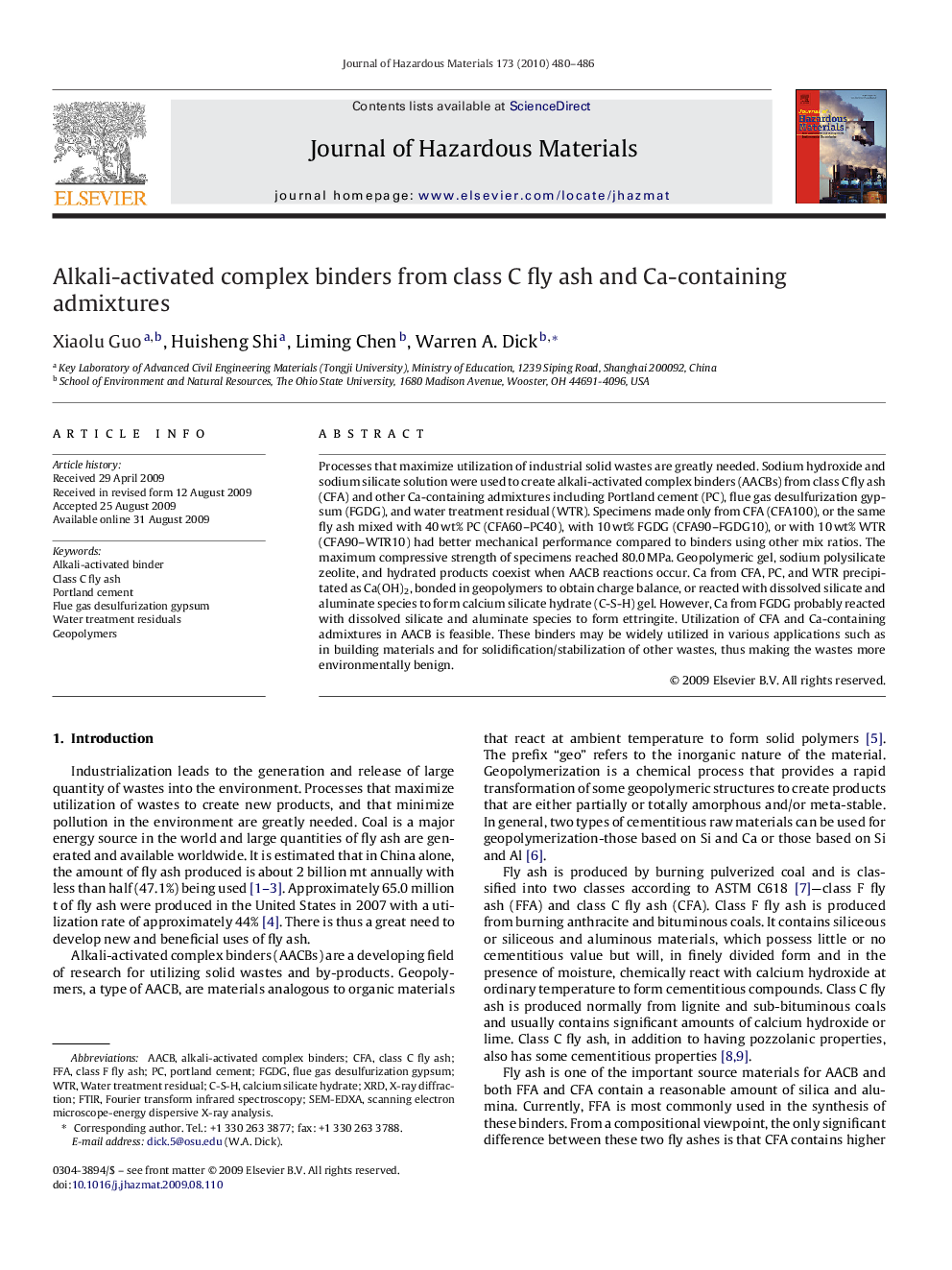| Article ID | Journal | Published Year | Pages | File Type |
|---|---|---|---|---|
| 580994 | Journal of Hazardous Materials | 2010 | 7 Pages |
Abstract
Processes that maximize utilization of industrial solid wastes are greatly needed. Sodium hydroxide and sodium silicate solution were used to create alkali-activated complex binders (AACBs) from class C fly ash (CFA) and other Ca-containing admixtures including Portland cement (PC), flue gas desulfurization gypsum (FGDG), and water treatment residual (WTR). Specimens made only from CFA (CFA100), or the same fly ash mixed with 40Â wt% PC (CFA60-PC40), with 10Â wt% FGDG (CFA90-FGDG10), or with 10Â wt% WTR (CFA90-WTR10) had better mechanical performance compared to binders using other mix ratios. The maximum compressive strength of specimens reached 80.0Â MPa. Geopolymeric gel, sodium polysilicate zeolite, and hydrated products coexist when AACB reactions occur. Ca from CFA, PC, and WTR precipitated as Ca(OH)2, bonded in geopolymers to obtain charge balance, or reacted with dissolved silicate and aluminate species to form calcium silicate hydrate (C-S-H) gel. However, Ca from FGDG probably reacted with dissolved silicate and aluminate species to form ettringite. Utilization of CFA and Ca-containing admixtures in AACB is feasible. These binders may be widely utilized in various applications such as in building materials and for solidification/stabilization of other wastes, thus making the wastes more environmentally benign.
Keywords
Related Topics
Physical Sciences and Engineering
Chemical Engineering
Chemical Health and Safety
Authors
Xiaolu Guo, Huisheng Shi, Liming Chen, Warren A. Dick,
